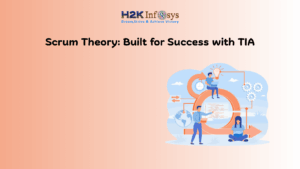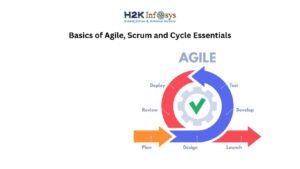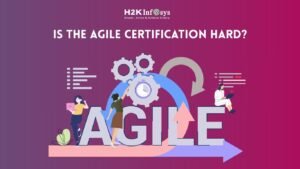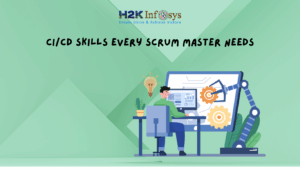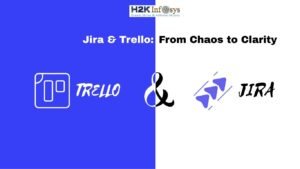Large and small businesses of all sizes have used the Scaled Agile Framework® (SAFe®) to plan and streamline their journeys as they expand their Agile practices throughout their organization’s since 2011. As markets evolve and best practices are refined by practitioners around the world, Scaled Agile Inc. has routinely updated the framework in true Agile form.
The most recent version of the framework, SAFe 6.0, was just released and it includes a number of exciting enhancements and improvements that will assist both present and future users get the most out of the framework.
“SAFe has emerged as the industry norm for businesses looking to achieve business agility at scale. We take this obligation seriously and are consistently investing in SAFe’s evolution to support and enable the most recent business and technological trends. These recent releases represent a significant advance in how enterprises integrate SAFe practices in day-to-day work, make the change stick, and achieve the benefits of true business agility.” You can check out the Agile certification course to learn more about SAFe 6.0.
What’s New in SAFe 6.0?
The terminology and organisational structure have undergone a number of relatively minor changes, as well as a few significant ones that may have an impact on how businesses use SAFe and how SAFe partners, trainers, and consultants (including our own sizable team of SAFe experts) train and coach these businesses.
Scaled Agile Inc. (SAI) categories the 6.0 upgrades generally into the following six groups:
- Strengthening the foundation for business agility
- Empowering teams and clarifying responsibilities
- Accelerating value flow
- Enhancing business agility with SAFe across the business
- Building the future with AI, Big Data and Cloud
- Delivering better outcomes with Measure and Grow, and OKRs
- Strengthening the foundation for business agility
In order to maintain a competitive edge in a highly dynamic market, businesses will be better able to respond swiftly to market changes and emerging possibilities with the support of a solid foundation for business agility. Business Agility was made a central element of the SAFe 5.0 architecture, and these most recent updates have strengthened that base even further. The following are a handful of the most significant updates:
- New duties for SPCs and updates to the Business Agility Value Stream, SAFe Foundation, and SAFe Implementation Roadmap.
- The Agile Manifesto and the five principles of lean thinking now serve as symbols of the lean-agile mindset, and the House of Lean has been retired.
- The SAFe Principles are now in line with the eight common characteristics of a flow-based system, the five Lean Thinking principles, and accelerators for removing flow barriers.
- LPM training should start sooner in the transformation process, according to SAI.
- A greater emphasis is being placed on creating a culture of continuous learning, which emphasises constant improvement and supports a culture of innovation.
- SPCs are urged to act as change agents by offering coaching for procedures and important steps in the Implementation Roadmap.
- Empowering teams and clarifying responsibilities
Many Agile practitioners have built successful careers around developing knowledge in the roles and responsibilities described in SAFe since they are an essential component of the broader framework. Many of these duties have been made clearer with version 6.0, which ought to make their work even simpler and more efficient. Although almost all of the roles and ideas have been modified to conform to the new framework, the following modifications are the ones we think are the most significant:
- The function of a scrum master (now officially known as a “team coach”) has been broadened to encompass enhancing flow, creating high-performing teams, and fostering organisational agility.
- To reflect the crucial collaborations necessary to support effective system architecture, solution architecture, product management, and solution management roles have been updated.
- Accelerating value flow
The framework now describes eight qualities of flow and eight associated accelerators to make value flow more quickly, expanding on the significance of the new SAFe Principle (#6):
- The eight attributes of flow and the eight flow accelerators from Principle #6 are described in new section headers on The Big Picture called Team Flow, ART Flow, Solution Train Flow, and Portfolio Flow.
- Clarifications regarding the use of a Kanban (now known as a SAFe Team Kanban) will aid individual teams in improving the flow of value through the ART.
- Value Stream Management is now officially acknowledged as a crucial Portfolio-level duty.
- The Value Management Office (VMO), which once supported understanding, measuring, and optimising the flow of value, has changed its name and focus.
- Enhancing business agility with SAFe across the business
We have long believed that workflows outside of IT should be governed by agility. There is now a much more extensive knowledge base about how to do that in the SAFe 6.0 enablement content. For instance,
Five patterns which are highlighted as supporting full-scale business agility are business-enabled ARTs, business trains, Agile executive teams, applying SAFe to other business functions, and combining operational and development value streams within the same portfolio.
- Building the future with AI, Big Data and Cloud
These conceptual modifications reflect the framework’s forward-looking view and acknowledge the significance of these cutting-edge technologies for the future success of businesses.
- AI is acknowledged as a potent instrument for enhancing operational and value streams for development.
- Big Data now looks to be a crucial component of the Portfolio Flow, where the company should give top priority to gathering, interpreting, and finally using the data produced by ARTs and gathered from outside sources.
- The requirement for businesses to migrate to the cloud has fundamentally altered how digitally enabled solutions are developed, deployed, and maintained.
- Delivering better outcomes with Measure and Grow, and OKRs
SAFe 6.0 has improved the framework’s emphasis on metrics, OKRs, and making data-driven decisions (a principle we frequently impart to our clients) even if the changes are mostly to vocabulary and organisational structure.
Conclusion
To learn more about SAFe 6.0, check out the SAFe Agile training.







